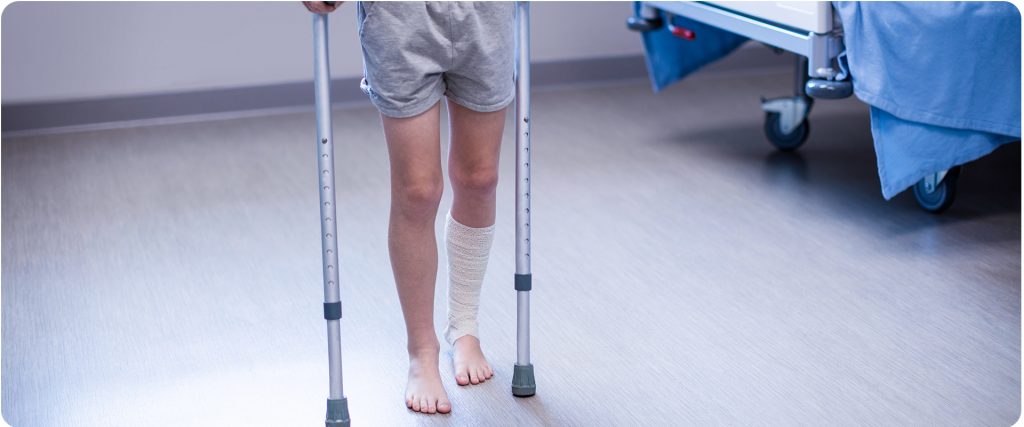When you undergo surgery for various conditions, restrictions are often placed while waiting for the soft tissue or bone to heal. In the lower limb especially with foot and ankle surgery you may be in a protective boot or cast and advised not to bear weight on the limb. This can often be difficult for even the fittest patients.
Crutches have traditionally been used when patients are advised not to walk on the limb. Crutches transfer weight from the legs to the upper body and increases the size of the patients’ base support. There are 3 types of crutches the axilla crutch, the elbow (Canadian) crutch and gutter crutches.
Axilla crutches are the traditional crutch that goes into the underarm however many patients find difficulty with pressure into the underarm with prolonged use. The elbow crutch does not put pressure in the armpit and is a good alternative to the axillary crutch. Gutter crutches are useful for patients that cannot put weight through their forearms.
However, alternatives are available for patients that find crutches difficult but want to maintain mobility while non weight bearing. I regularly recommend knee scooters to my patients that require prolonged immobilization in boots or plasters. Knee scooters glide and allow patients to mobilize effortlessly without requiring any upper body strength. They are easier to operate, safe and convenient especially over medium to longer distances.
During periods of immobilization I still want my patients to maintain their independence. For short distances and within the home crutches are often useful however for medium to longer distances the knee scooters is a great option. Many adaptions to the home, shower and vehicles may need to occur when recovering from surgery. For elective surgery, these modifications should be considered prior to the operation to allow for a safe speedy recovery.
Found this article helpful? Get in touch with us for any enquiries you may have or to book an appointment.

